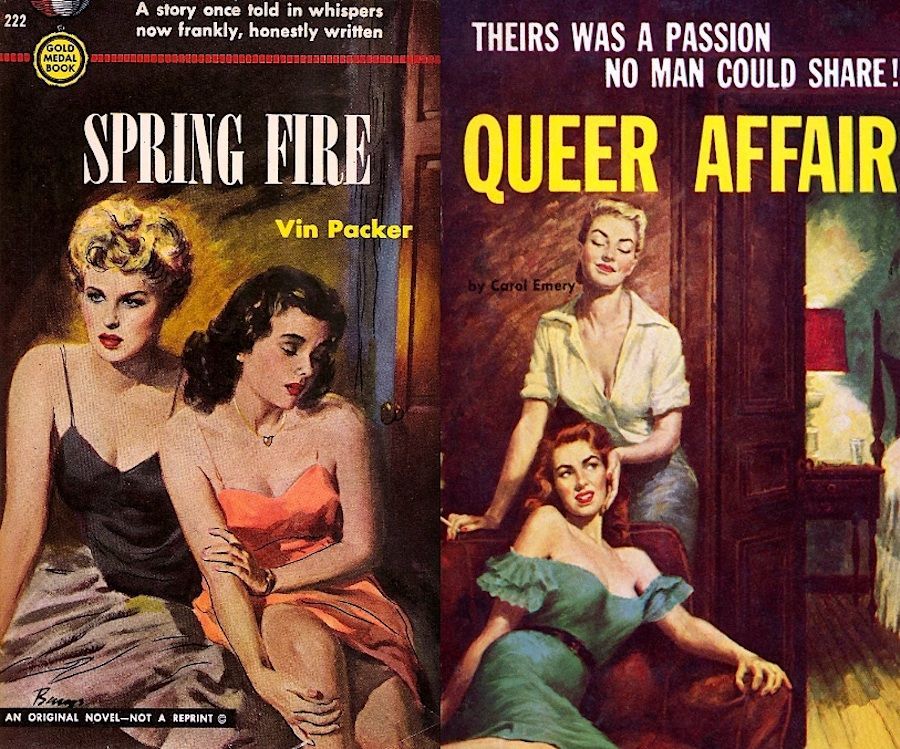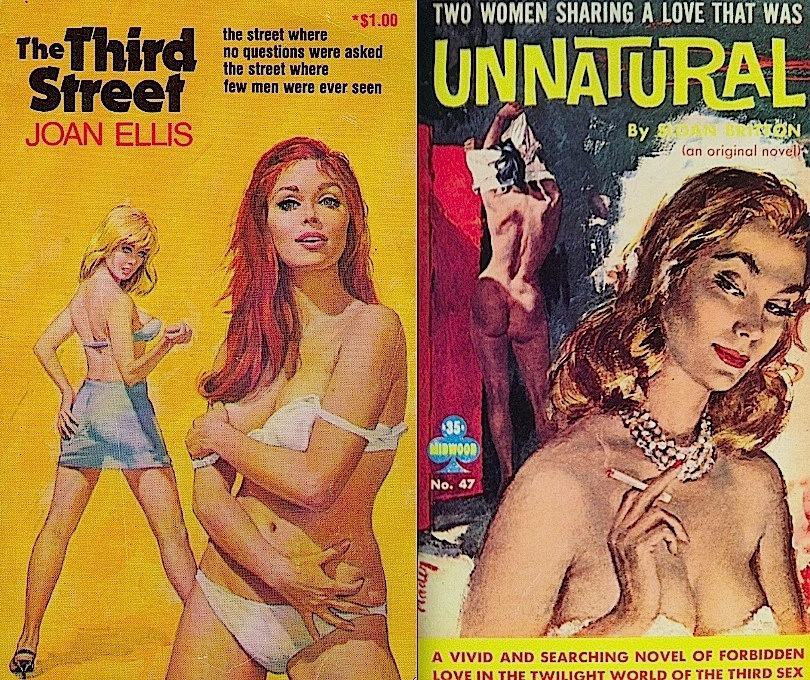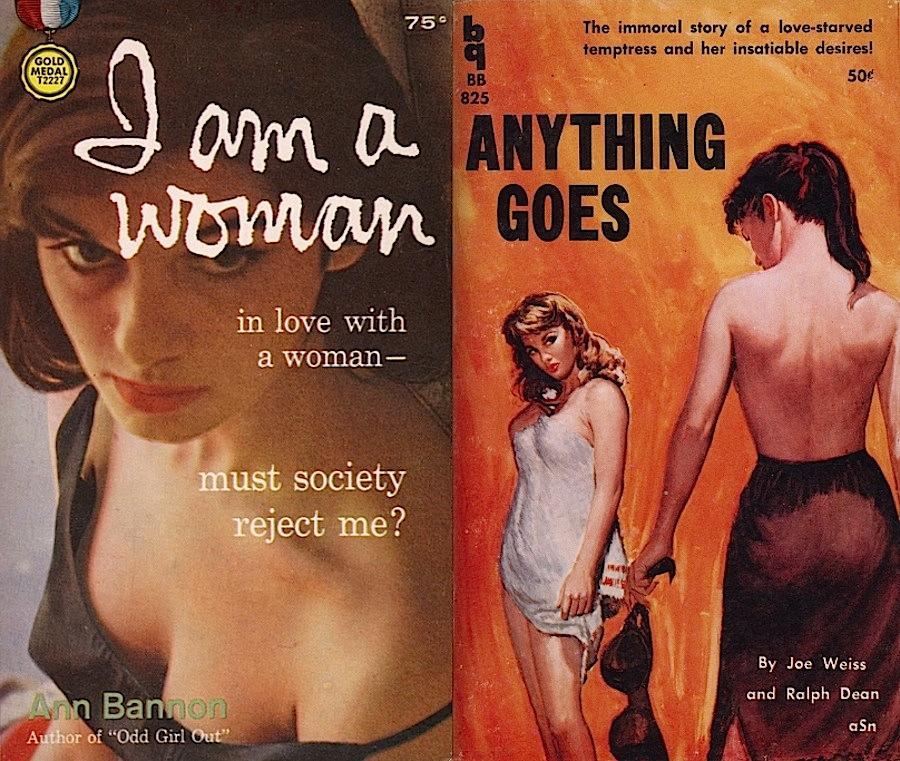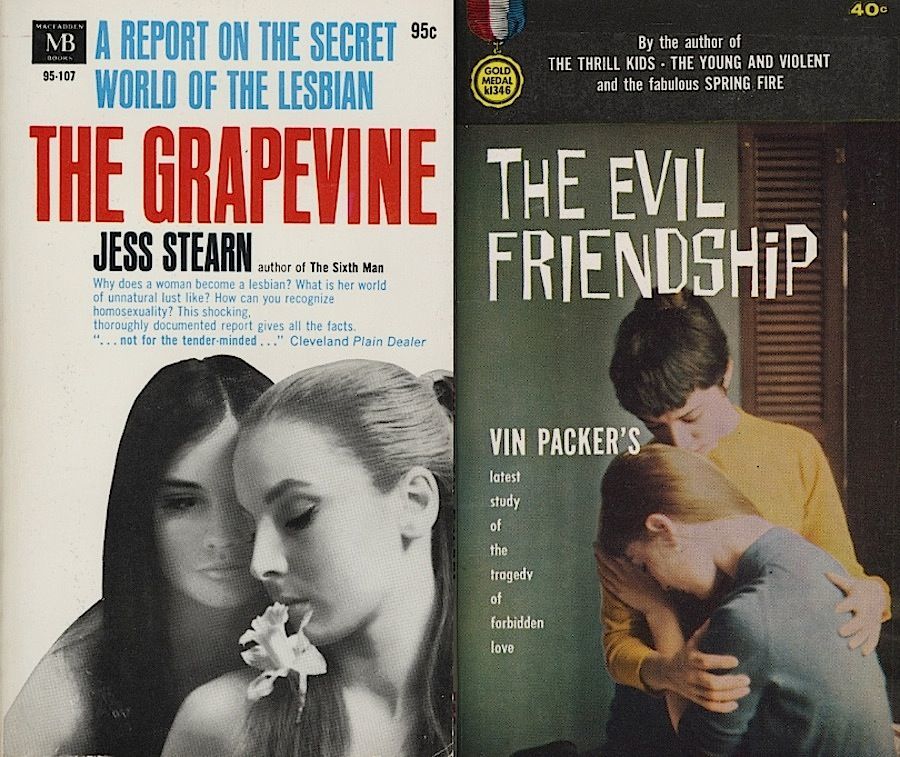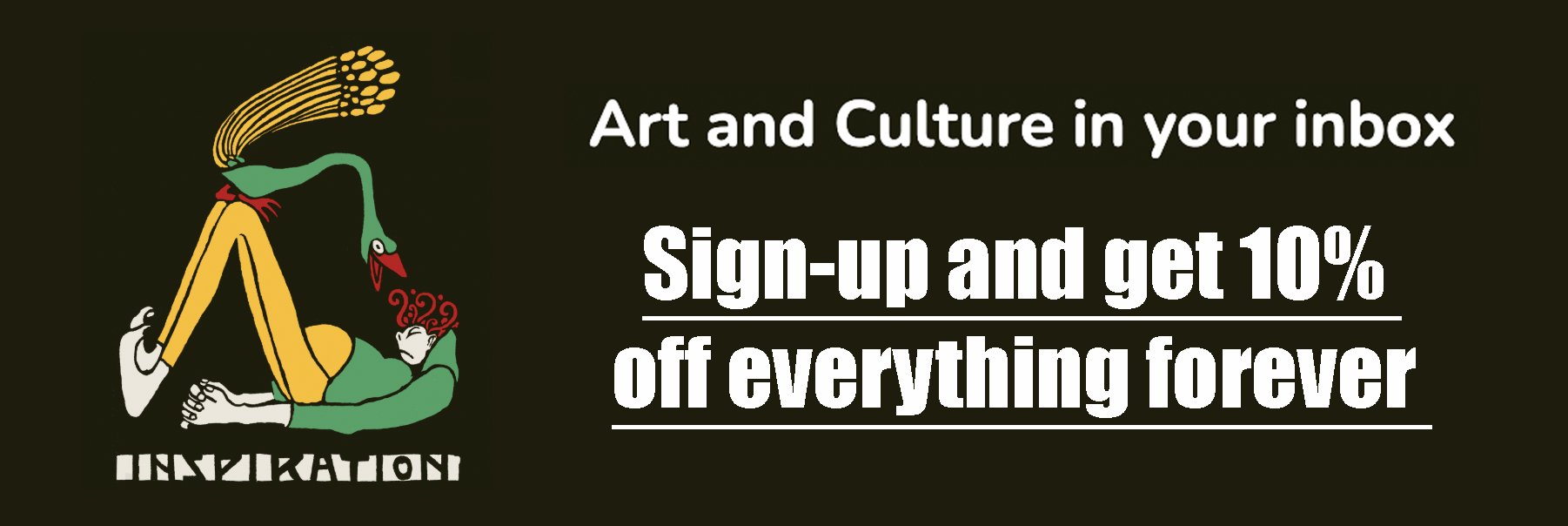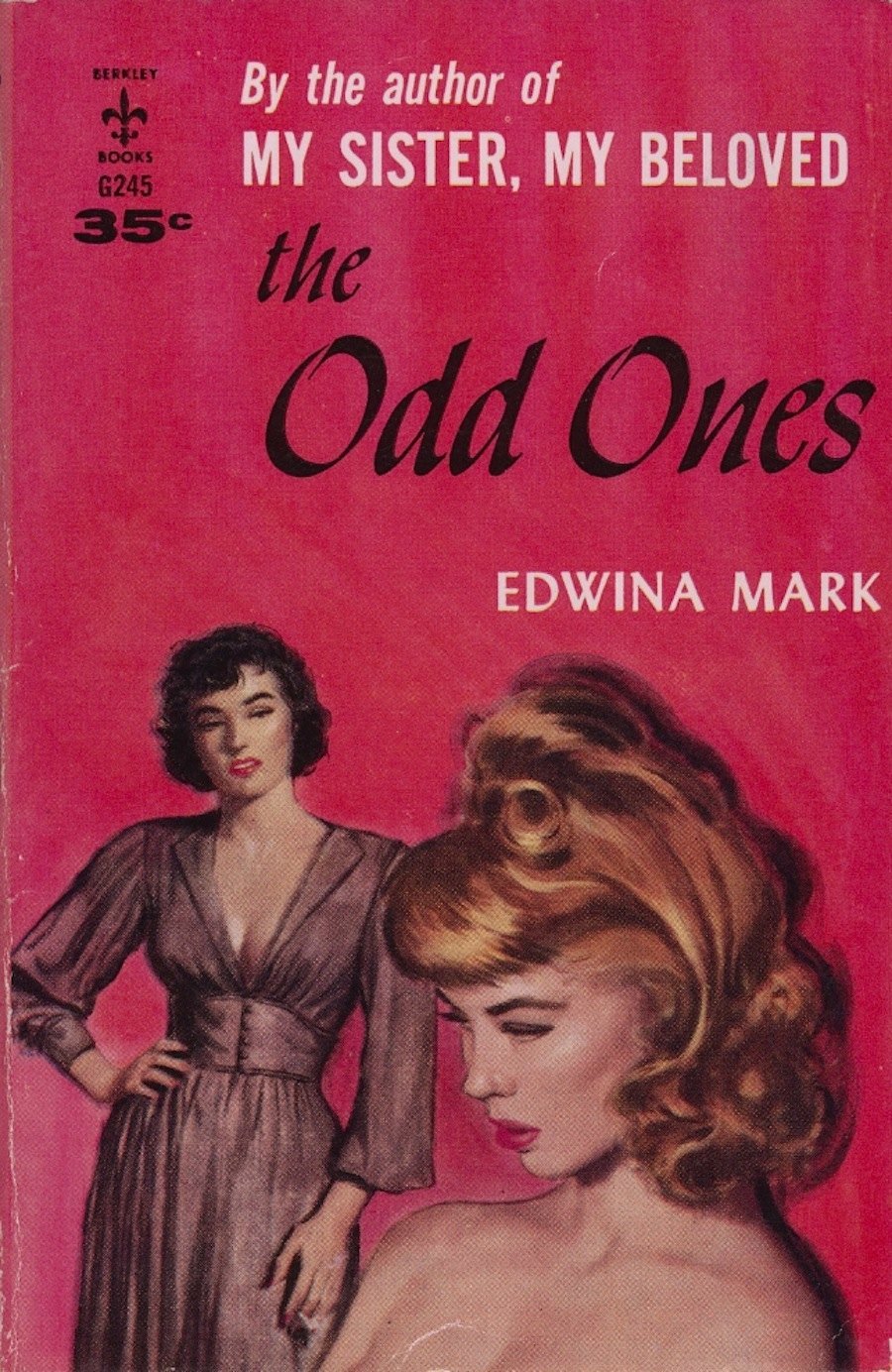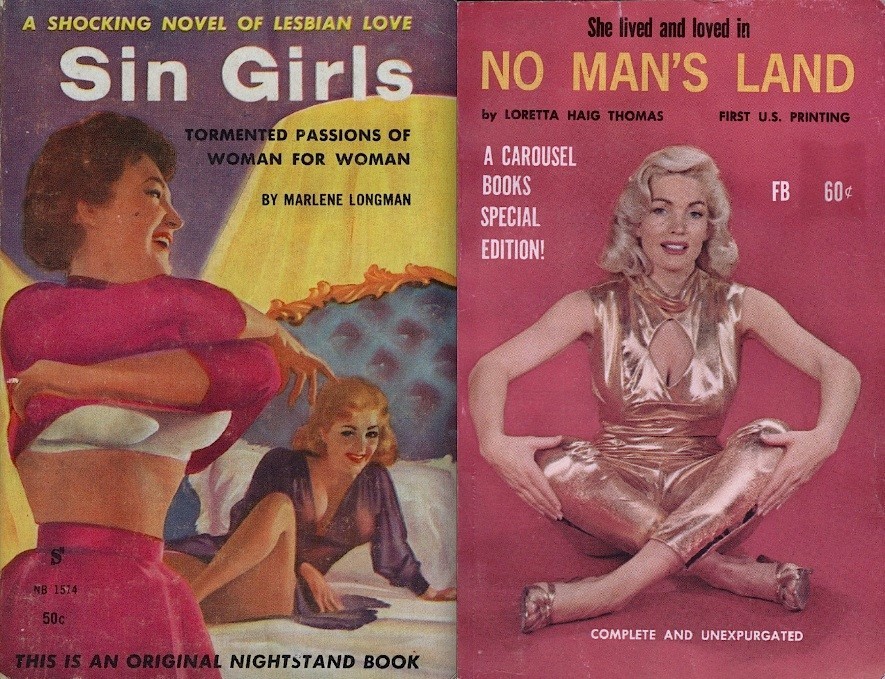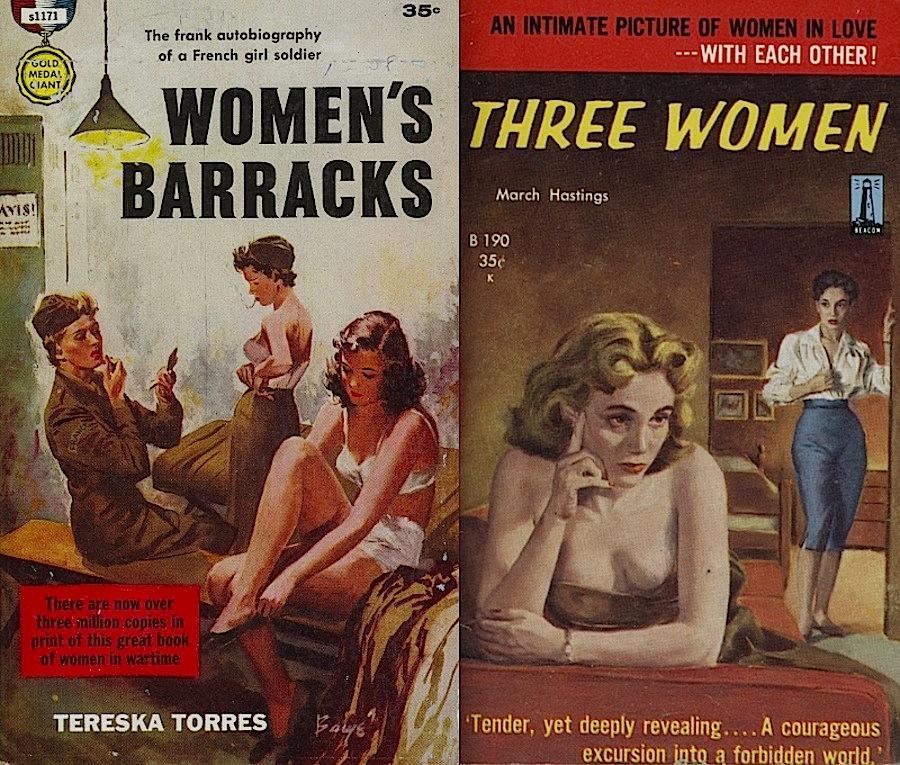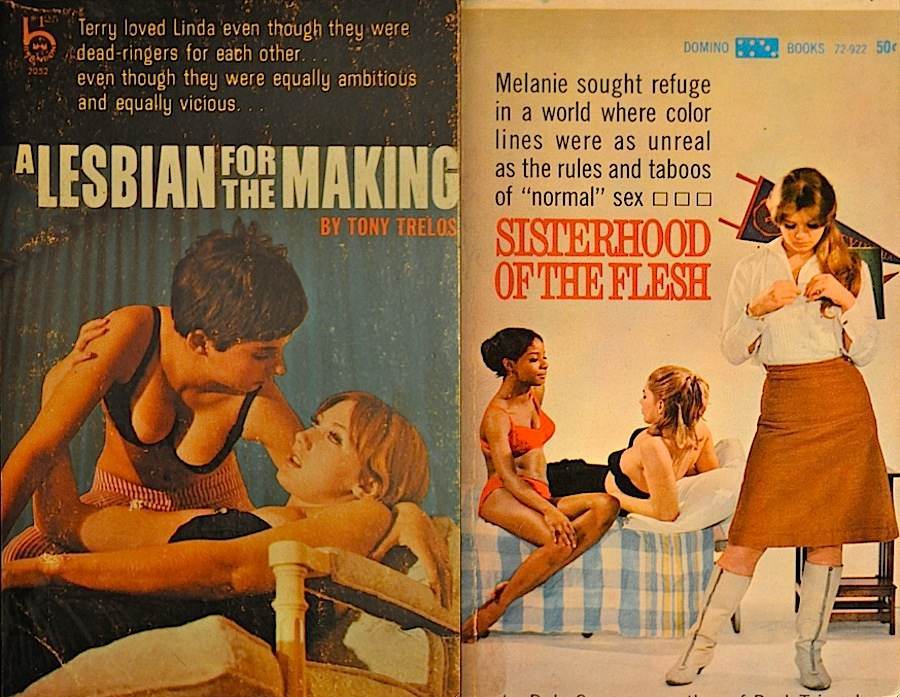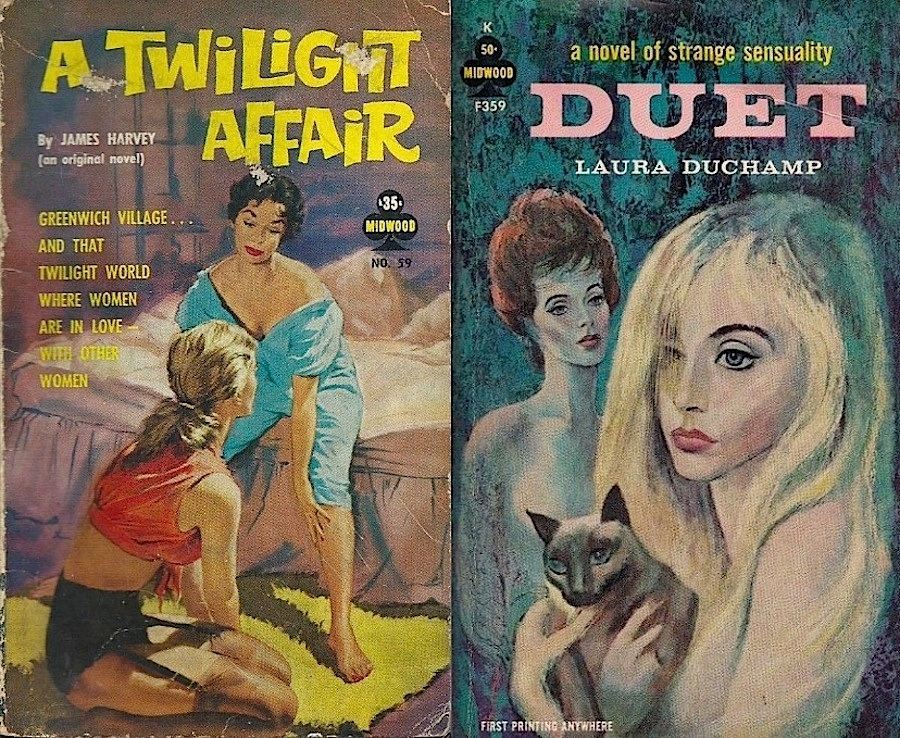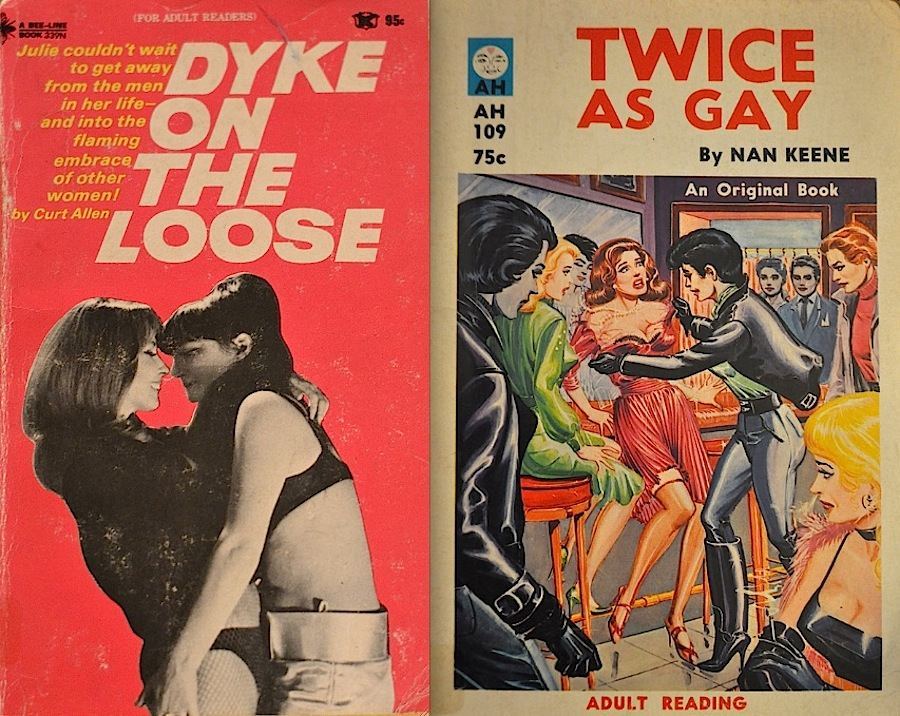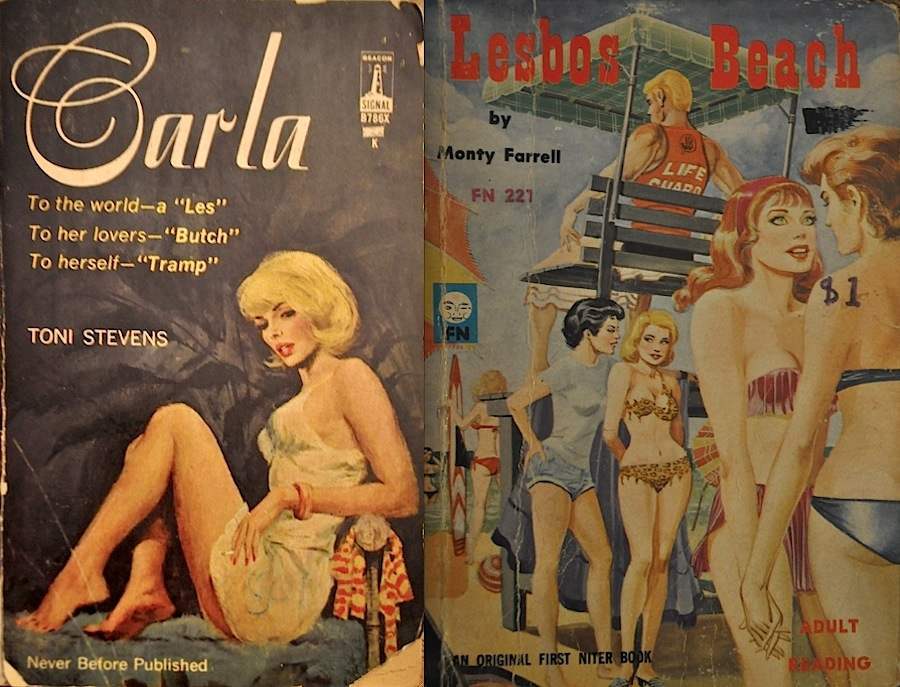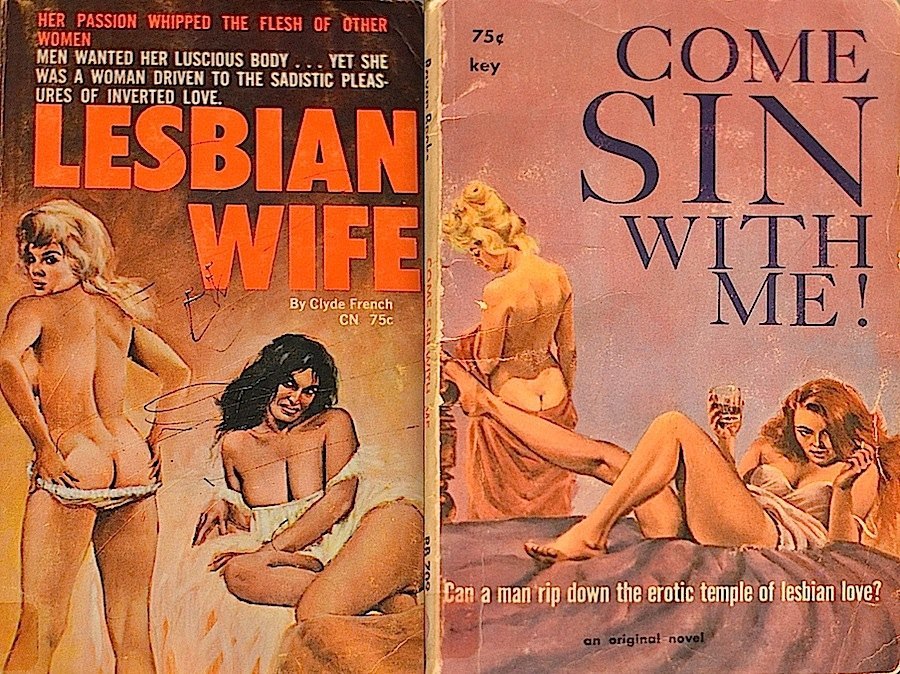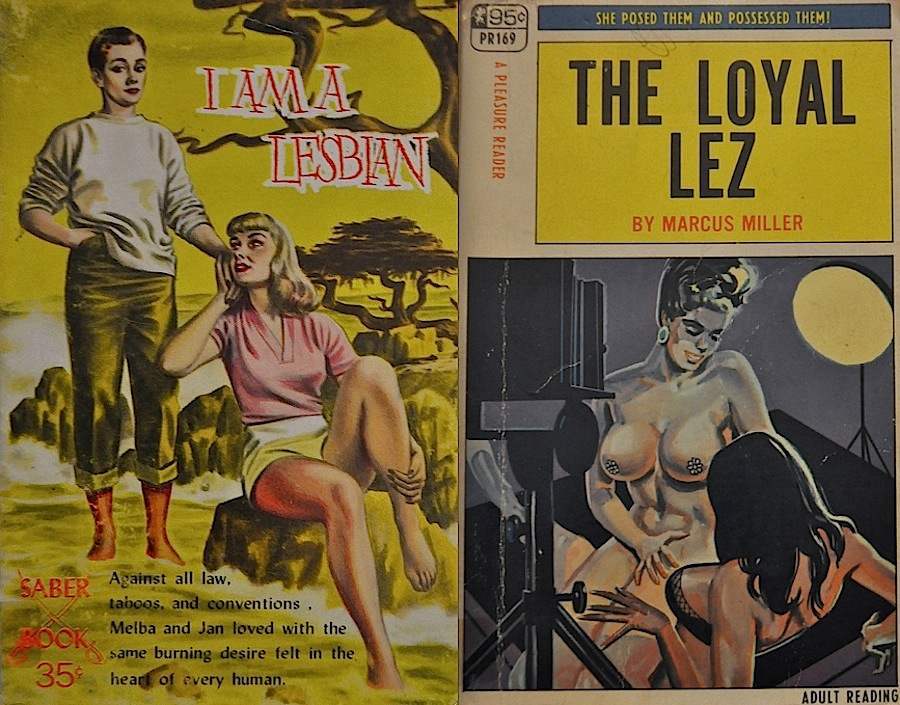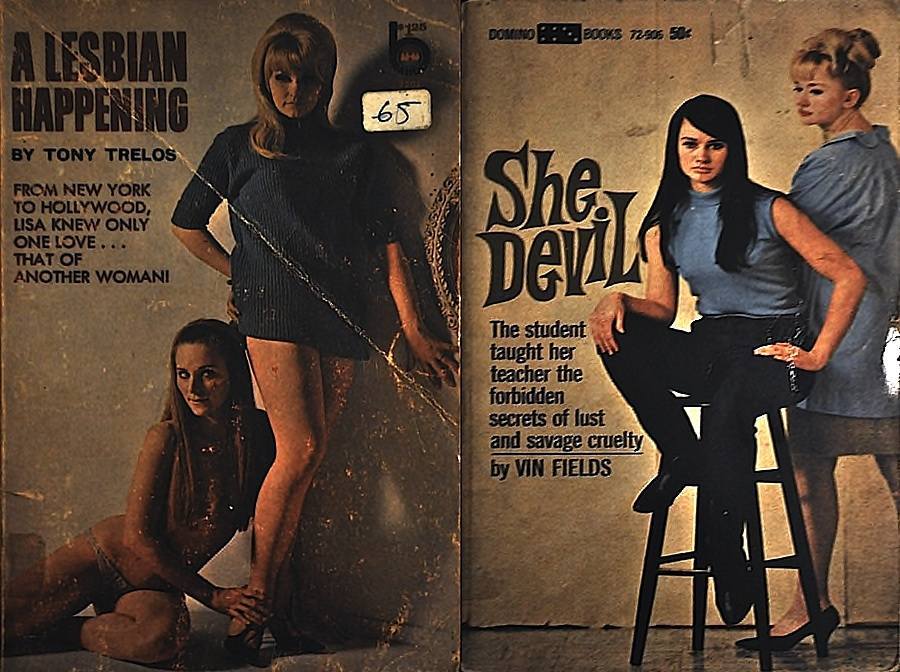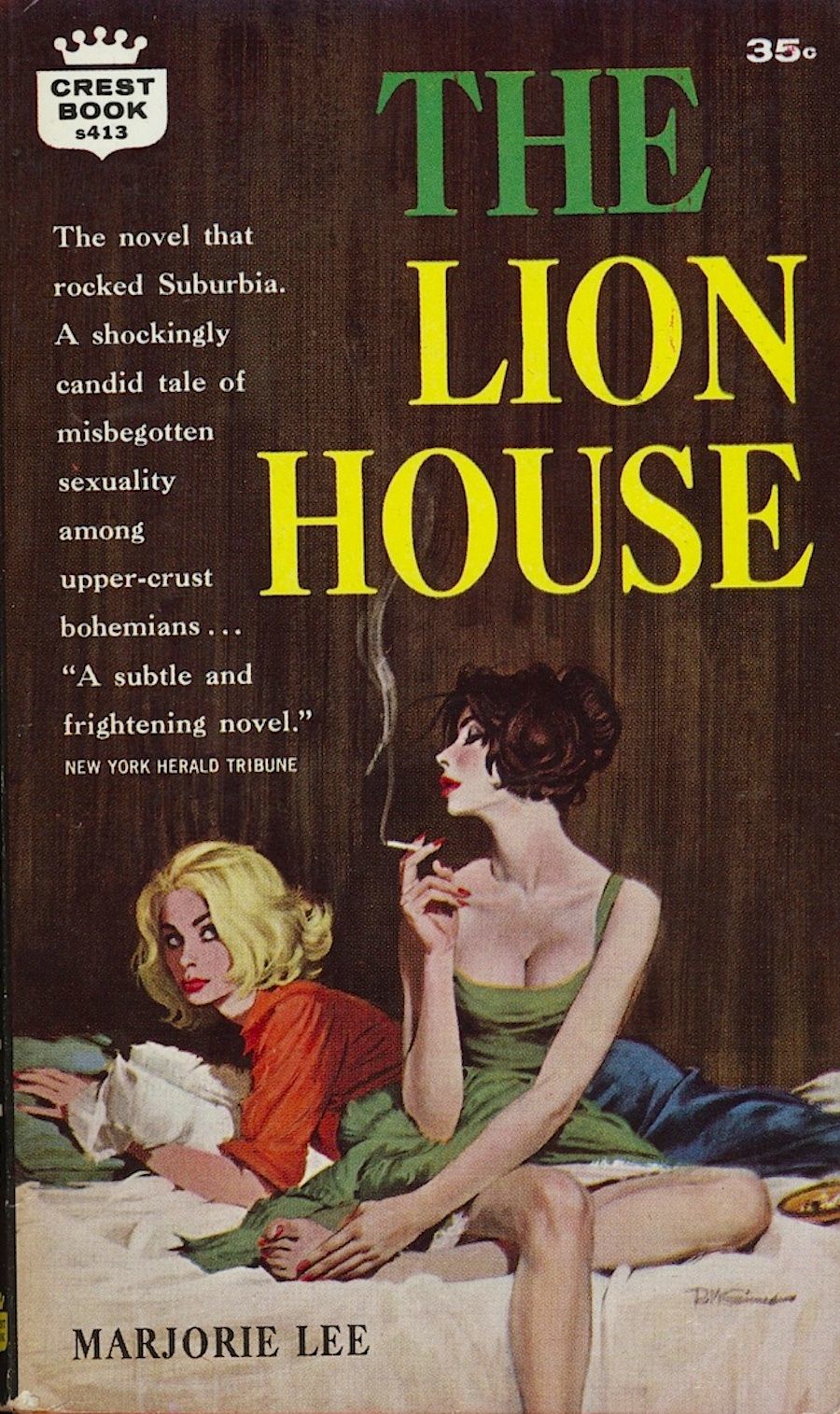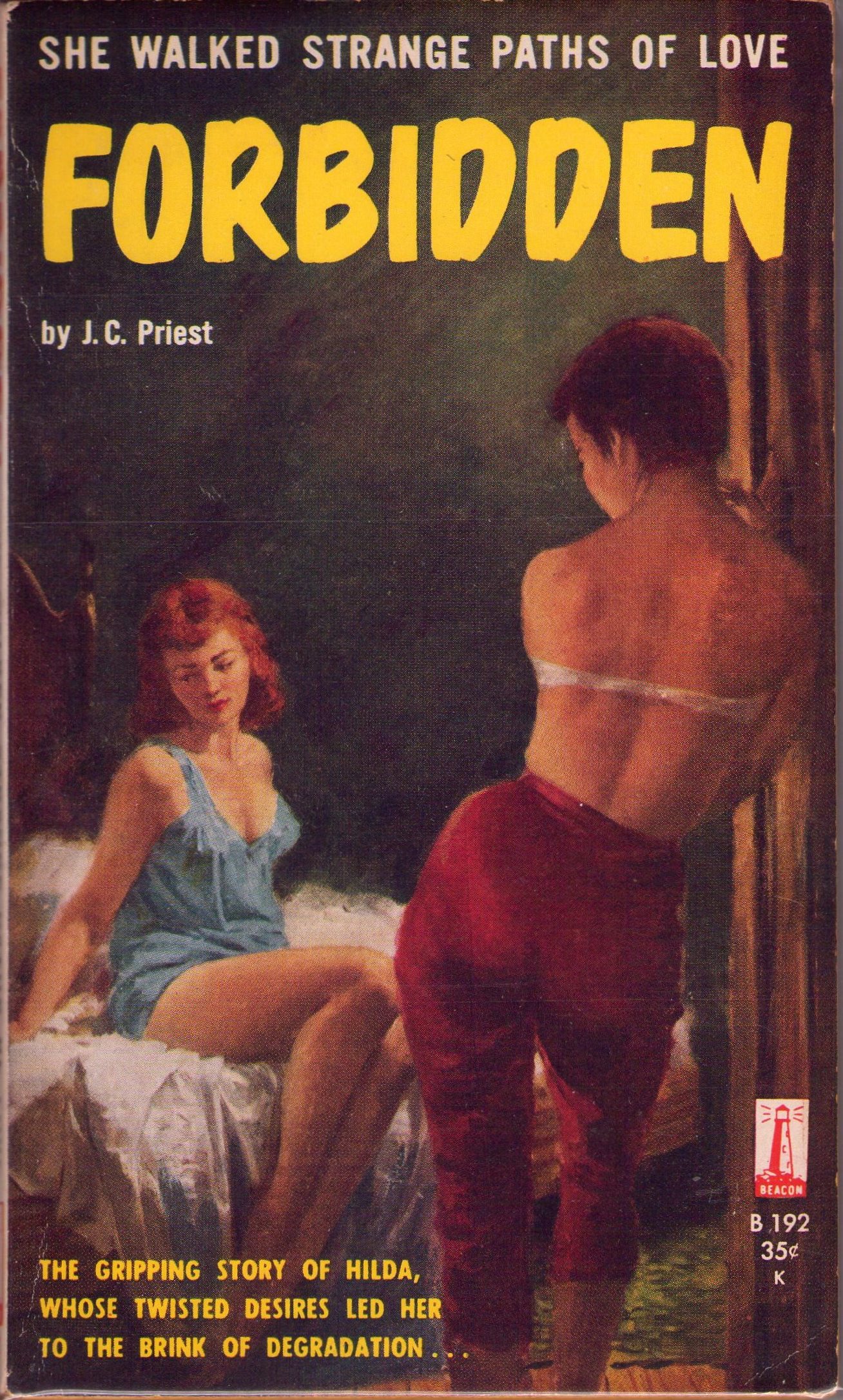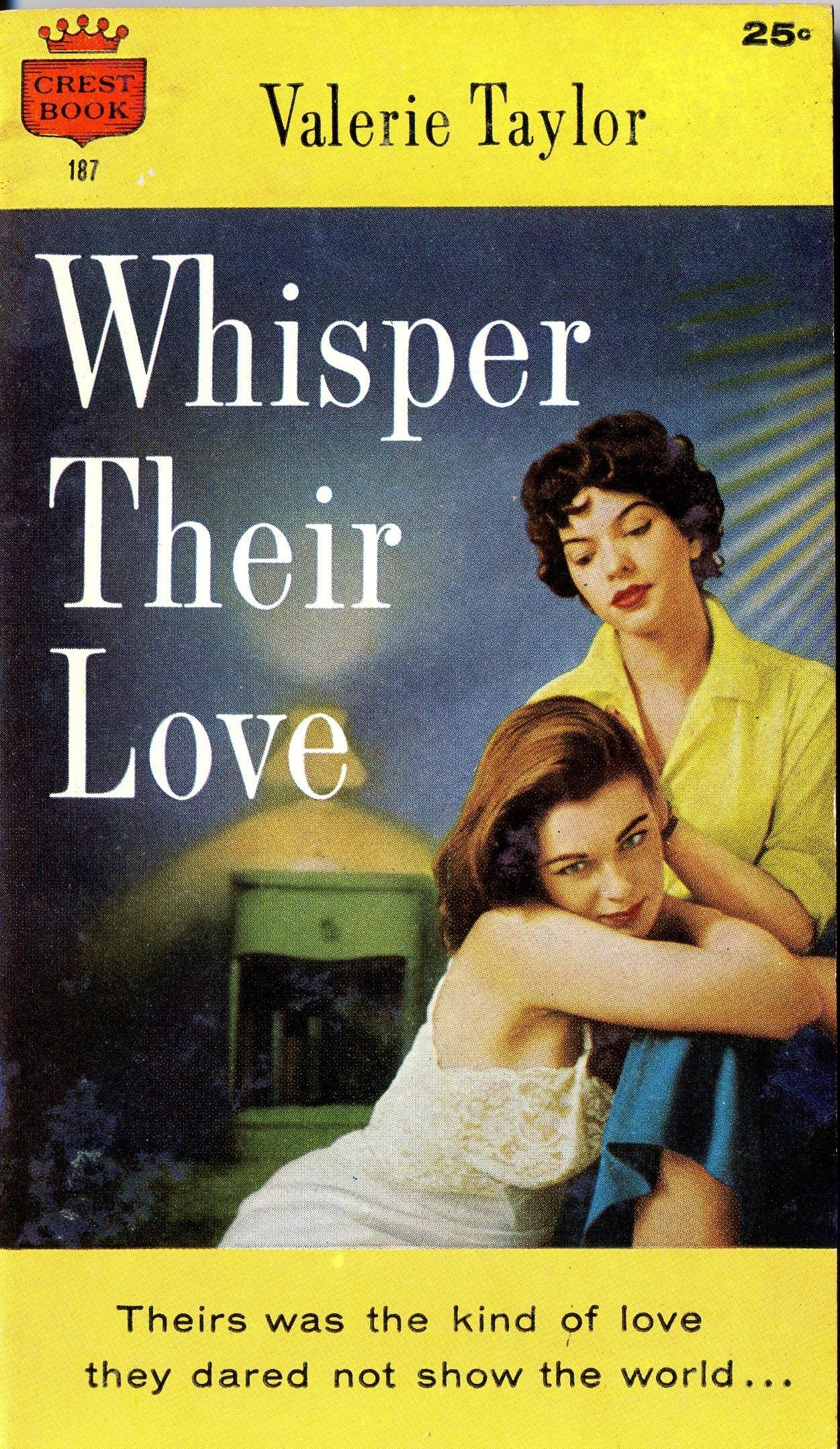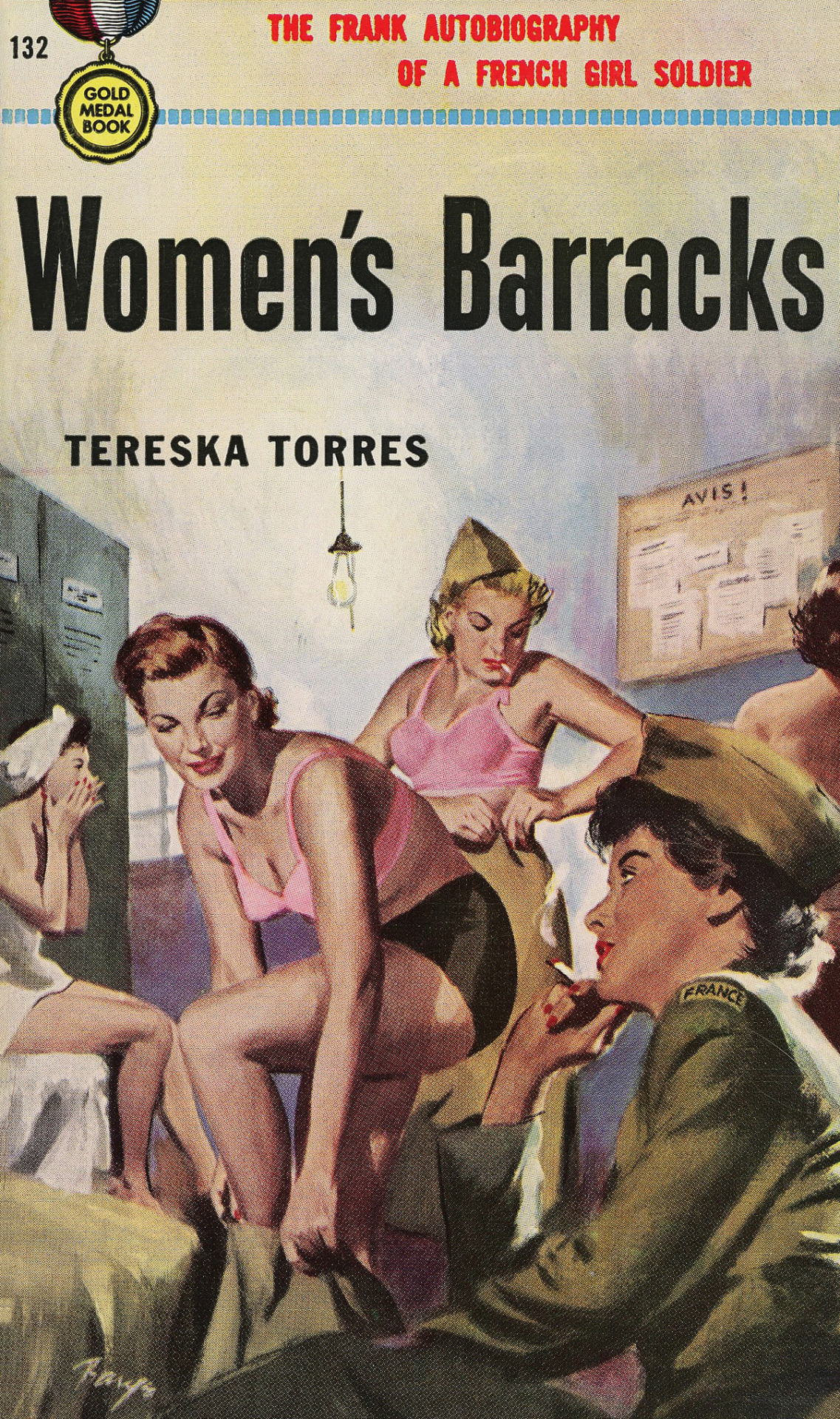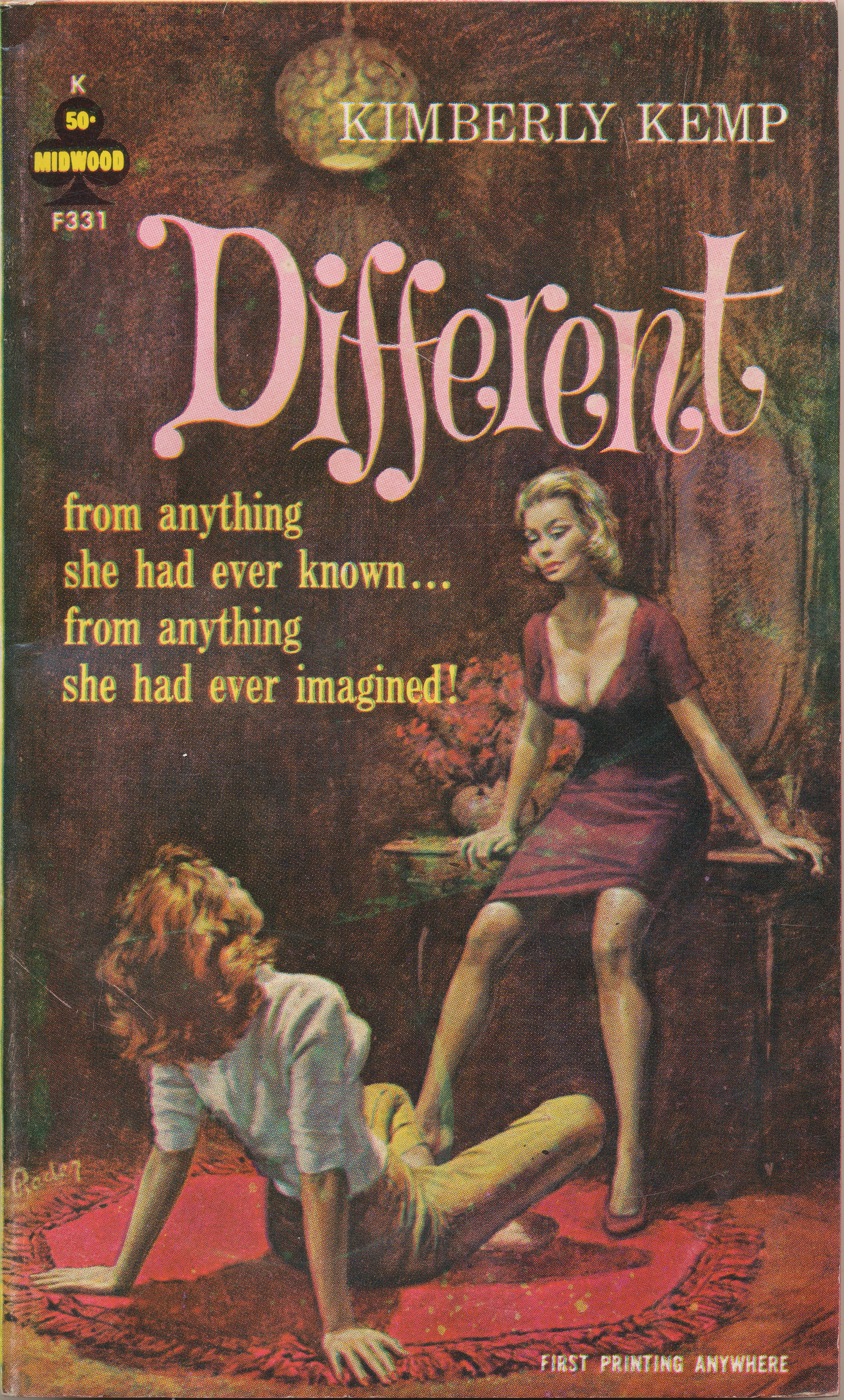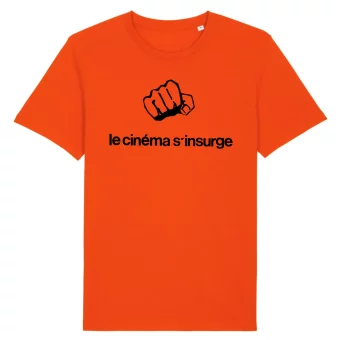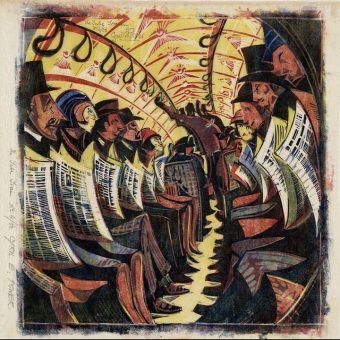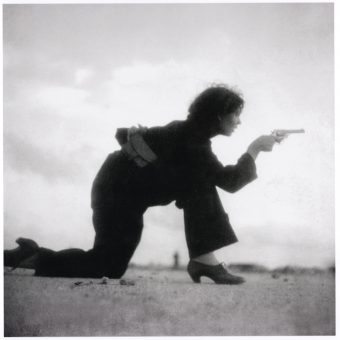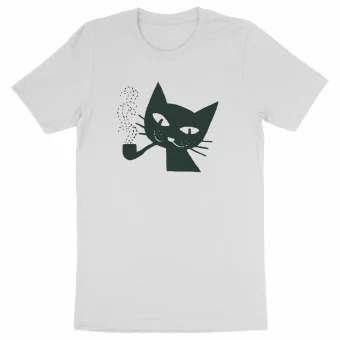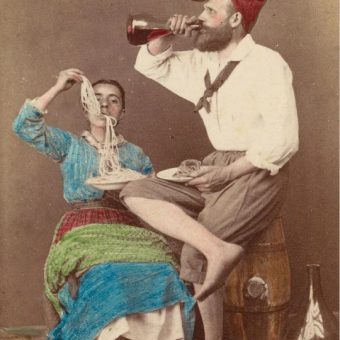Lesbian Pulp Fiction
There was an old secondhand bookshop in Edinburgh where I whiled away many an afternoon during the school summer holidays browsing pulp books, American comics and gentlemen’s magazines. There was no particular order to the guddle of fiction precariously stacked on tabletops and shelves–westerns nestled with vampires stories, Sven Hassels next to Batman comics, and tales of classic science-fiction novels could be found with soft-core fiction and well-thumbed editions of the naturist magazine Health and Efficiency, with its painted out pubic triangles. The owner peered out from behind a glass counter hidden by books, magazines, trading cards and a cloud of smoke from the cigarette that seemed to permanently dangle from his lips. You could trade-in your stash of comics or books for new ones, and he never seemed to mind punters idling over the trays of dog-eared paperbacks.
It was amongst such treasures I found stray copies of luridly covered lesbian fiction featuring breathless blondes and sloe-eyed brunettes lingering on pastel-coloured divans. Some of the covers were enough to merit their purchase, though reading the blurb made me wonder who these books were actually meant for and how did they end-up in this dingy pulp repository frequented by men in beige raincoats and spotty adolescent boys?
These books were part of the American “Golden Age” of lesbian fiction that boomed between 1950 and 1965, when several hundred sapphic-themed novels were published and sold by their millions. The readership was mainly men, with many of the titles being were written by men using a female pseudonym, which explains the sensationalist covers and the often judgemental and nudge-nudge, wink-wink tag-lines. Often these stories dealt with straight women indulging in supposedly “forbidden desires” before returning to their boyfriends or husbands.
That said, a considerable number were written by women for women and were more serious in their intent, and quite a few of these authors “frequently complained that the illustrations rarely matched plots.”
However, despite such sensationalism these books did give many a youngster the hope they were not alone.
BUT
YOU DON”T LOOK
LIKE A
LESBIAN!
The girl was young, softly pretty, with a well-developed figure. And she was in love–with another woman.
Unlike the male homosexual, the lesbian is usually able to conceal her sex drive. She moves unnoticed in society, working in every field–from Madison Avenue copywriter to small town beautician. She’s frequently married and might even have children.
She could live next door to you, attend your church or be a member of your family–but you’d never know it. She hides her unnatural life from everyone, except other members of the “fourth sex,” kept constantly alert by the lesbian grapevine.
This brings a whole new meaning to Marvin Gaye’s song “I Heard It Through The Grapevine”.
LOVE IN THE SHADOWS
Beautiful young Jean Grant had always known she wasn’t like the other girls in her home town. She had never been able to understand their interest in boys…
In New York Jean discovered her true sexual nature through the expert teachings of sleek Sherri Lancaster, who found in Jean an all too willing pupil…
THE ODD ONES is set against the glamorous background of Manhattan’s high-fashion world. The author of MY SISTER, MY BELOVED has written another gripping story of the love that hides its face in darkness…
SIN GIRLS
THEY MADE LOVE…
beautiful Leslie, her body lush and full as a woman’s should be…and Laura whose hips were mannish, whose bosom was small…and they found the release of their untamed passions. But Laura was only the first for Leslie. Then came flame-haired Ronnie, who demanded more than Leslie could give. Then Eileen, Doris, Roberta, Annette, and others. And soon, Leslie was trapped by her own animal desires in a half-world of erotic cravings that made her stronger to all the normal pleasures a woman seeks. This is the most powerful novel you will ever read on the subject, written by a woman who is, herself
…A TORMENTED LESBIAN!
Who knew being a “tormented lesbian” was such a positive role model?
Spotter Bienecke Library, Buzzfeed & Lesbian Pulp Covers.
Would you like to support Flashbak?
Please consider making a donation to our site. We don't want to rely on ads to bring you the best of visual culture. You can also support us by signing up to our Mailing List. And you can also follow us on Facebook, Instagram and Twitter. For great art and culture delivered to your door, visit our shop.
